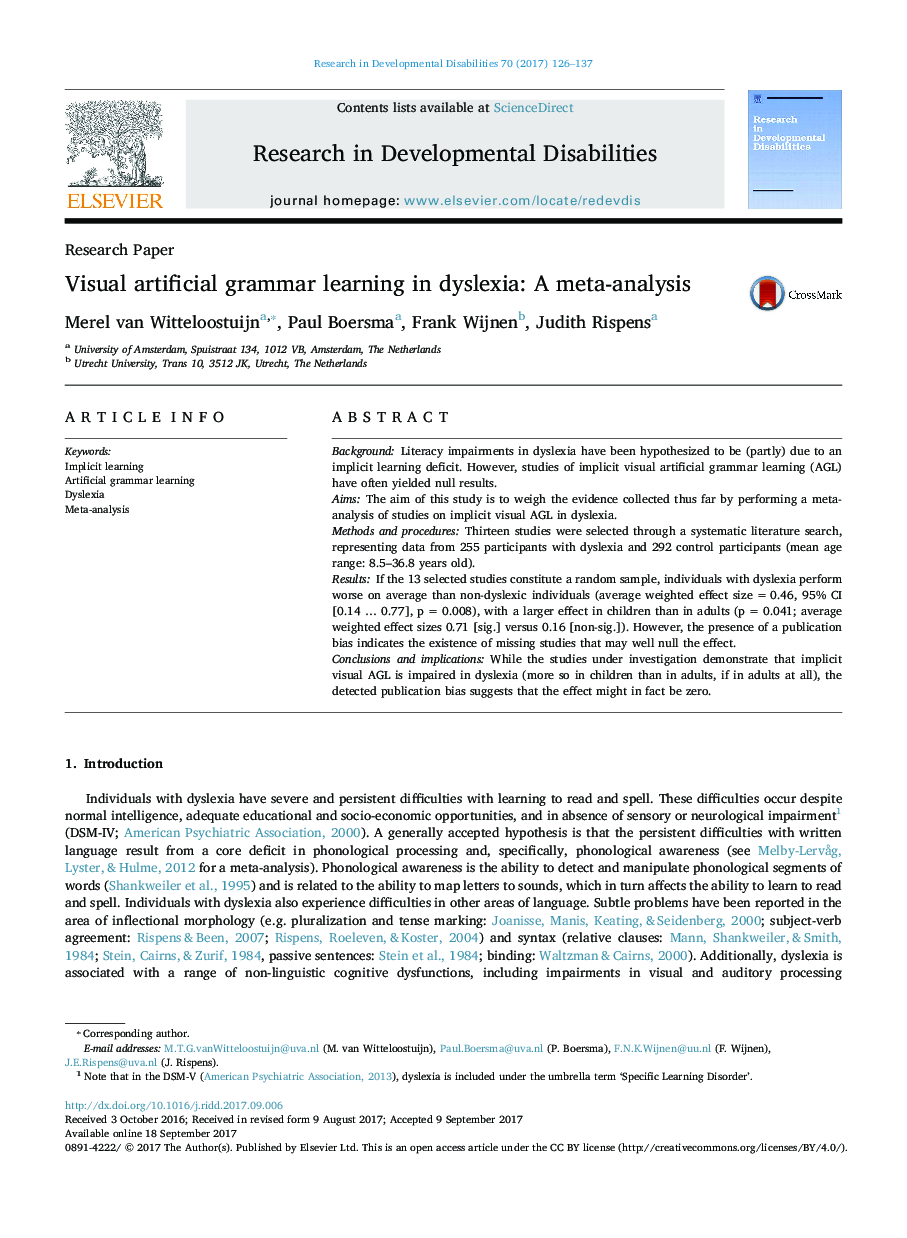| Article ID | Journal | Published Year | Pages | File Type |
|---|---|---|---|---|
| 4940999 | Research in Developmental Disabilities | 2017 | 12 Pages |
â¢A meta-analysis of 13 visual artificial grammar learning studies in dyslexia.â¢Dyslexia is characterized by artificial grammar learning difficulties (g = 0.46).â¢These difficulties may be more pronounced in children than in adults with dyslexia.â¢An observed publication bias suggests that missing studies may well null the effect.
BackgroundLiteracy impairments in dyslexia have been hypothesized to be (partly) due to an implicit learning deficit. However, studies of implicit visual artificial grammar learning (AGL) have often yielded null results.AimsThe aim of this study is to weigh the evidence collected thus far by performing a meta-analysis of studies on implicit visual AGL in dyslexia.Methods and proceduresThirteen studies were selected through a systematic literature search, representing data from 255 participants with dyslexia and 292 control participants (mean age range: 8.5-36.8 years old).ResultsIf the 13 selected studies constitute a random sample, individuals with dyslexia perform worse on average than non-dyslexic individuals (average weighted effect size = 0.46, 95% CI [0.14 ⦠0.77], p = 0.008), with a larger effect in children than in adults (p = 0.041; average weighted effect sizes 0.71 [sig.] versus 0.16 [non-sig.]). However, the presence of a publication bias indicates the existence of missing studies that may well null the effect.Conclusions and implicationsWhile the studies under investigation demonstrate that implicit visual AGL is impaired in dyslexia (more so in children than in adults, if in adults at all), the detected publication bias suggests that the effect might in fact be zero.
Graphical abstractThe present meta-analysis shows that, if the 13 selected studies constitute a random sample, individuals with dyslexia perform worse on average than non-dyslexic individuals (average weighted effect size = 0.46, 95% CI [0.14 ⦠0.77], p = 0.008), with a larger effect in children than in adults (p = 0.041; average weighted effect sizes 0.71 [sig.] versus 0.16 [non-sig.]). However, the presence of a publication bias indicates the existence of missing studies that may well null the effect.Download high-res image (180KB)Download full-size image
